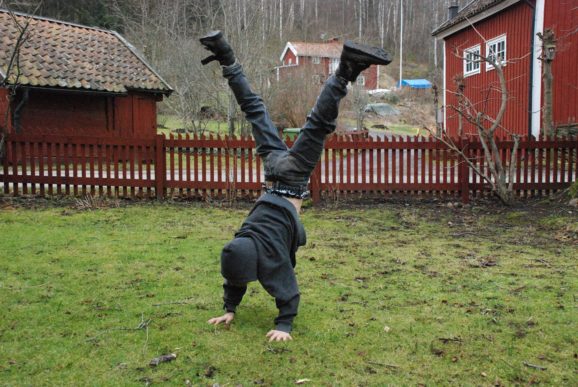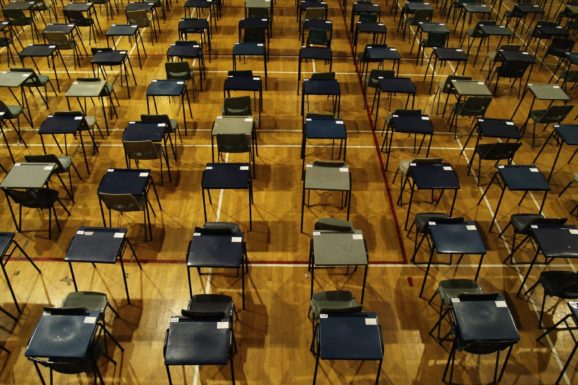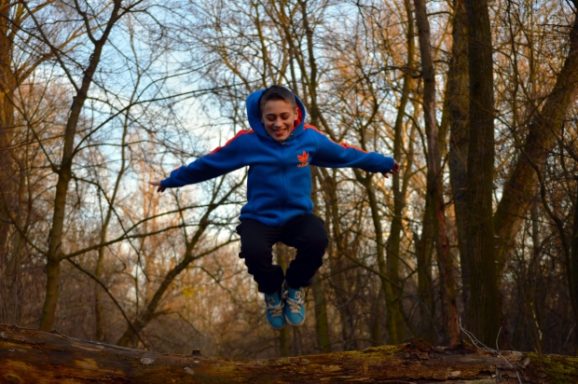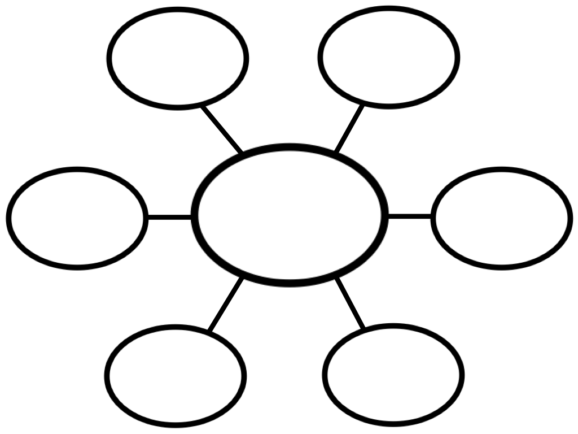It is 8:55 a.m.—time to change classes in Washington High School. Students are relieved because they get to actually move their bodies to the next location. However, in most middle or high schools, that is probably the last time they will get to move for the next 55 minutes or until the bell rings for the next period. Continue Reading…
As rhymes are brain compatible, I wrote an original one to symbolize what we teachers and administrators do to students in schools. It is as follows:
Students can’t talk in class.
They can’t talk in the hall.
They can’t talk in the cafeteria.
They can’t talk at all!
You might think that when students are sitting quietly and looking at you, you have their undivided attention. Let me tell you something you’ve probably figured out already. Students can be looking dead in your face and not paying a bit of attention to what you are saying. Continue Reading…
Have you ever stopped to think about how the colors in this world affect you? I didn’t think much about it until I made a mistake with color in my home. My husband and I dined with friends who had just moved into a beautiful new house. Their dining room was painted a cranberry color that provided an elegance to the already exquisite surroundings. Continue Reading…
A school system was in the process of building five new schools to house their increasing student population. Having read the research on the detrimental effects of fluorescent lighting, I shared with the architects rationales for including additional windows or a different type of lighting in the construction of these new buildings. The experts thanked me for my input but proceeded to include fluorescent lighting in plans for each of the five new edifices. Continue Reading…
Patrick is constantly calling your name. Even when he knows the answers to questions, he needs your assurance that his answers are correct. You are sick and tired of reprimanding him for talking out loud without being called upon first. Continue Reading…
You may have noticed that in almost every school where students change classes, there is a group of students who will be perfectly behaved in one classroom and out of control in another. Why does this happen? It may have to do with teacher expectations. Continue Reading…
Think back to when you finished high school. No doubt you can recall the names of many students in your senior class who did not have the grades or SAT scores to place in the top 25th or even the top 50th percentile of graduating seniors. Continue Reading…
This all-important strategy is used in at least two places in the real world – sports and medicine. Coaches advise players to picture themselves hitting the home run or scoring the touchdown before the game even begins. Continue Reading…
One of my favorite commercials is one for Walmart where a father surprises his teenage daughter with her own cell phone. In her euphoric state, she excitedly hugs her father and announces to him that she will now be able to “pin, post, tweet, snap, tag, check, and share.” Continue Reading…
There once was a man named North. His last name was America.
He fell in love with a beautiful woman named South. They got married and she took his name so she became South America. They honeymooned in Europe. Continue Reading…
Reciprocal teaching and cooperative learning are two of the best ways to have conversations about content. In the original definition of reciprocal teaching, the process is as follows: students make predictions about a part of text to be read. Continue Reading…
When I teach math, if the objective involves problem solving, I never use the problems in the book as my initial examples. Most do not have any real meaning for students. Continue Reading…
When I teach model lessons to K-12 students, I always play classical music before the lesson begins. If I am teaching elementary students, I go to each desk and introduce myself while they are listening to music. If the students are in middle or high school, I am at the door to greet them as they change classes. Continue Reading…
When students move while learning, they put information in procedural or muscle memory. Procedural memory is one of the strongest memory systems in the brain and the reason that one seldom forgets how to drive a car, ride a bicycle, play the piano, type on a keyboard, tie one’s shoes, or brush one’s teeth. Continue Reading…
IVAN CAPP: Interjection, Verb, Adjective, Noun, Conjunction, Adverb, Pronoun, Preposition (Language arts)
HONC if you’re alive! Hydrogen, Oxygen, Nitrogen, Carbon (Science) Continue Reading…
The use of the hands and brain activity are so complicated and interconnected that no one theory explains it. I can’t explain it either! I just know that some students need to have their hands involved before their brains can understand.
20 Instructional Strategies That Engage the Brain: #5 Graphic Organizers, Semantic Maps, & Word Webs
Whether referred to as concept, mind, or semantic maps or as word webs, graphic organizers are one of the best friends of a teacher who desires to facilitate the comprehension of students’ brains, so they are beneficial to all. Continue Reading…
As I travel around the United States presenting, I am realizing that the fun has gone out of teaching and learning in so many classrooms. With increased emphasis on standardized testing, benchmarks, and accountability, school is just not fun anymore! Continue Reading…
A while back, I was invited to present for the Honolulu Association for Supervision and Curriculum Development. My husband and I went one week earlier than the day on which I was to present so that we could enjoy the scenic beauty and historical significance of our 50th state. I will never forget spending one of those days at Pearl Harbor. Continue Reading…



















